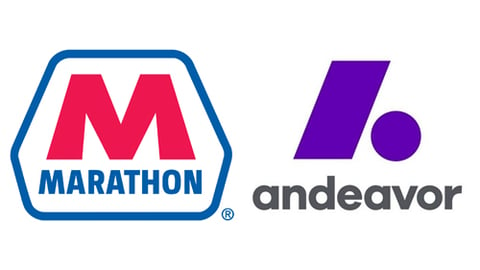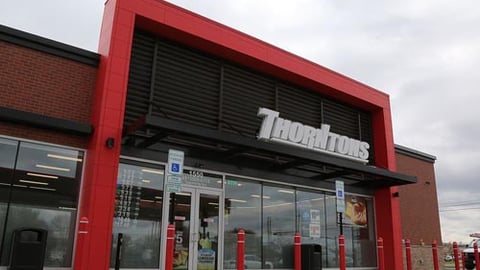2018 Shaping Up to Be a Potentially Record Year for C-store Industry M&A
NATIONAL REPORT — Merger and acquisition mania in the convenience and gas (C&G) sector remains very strong, according to John Sartory, managing director of Petroleum Capital & Real Estate LLC, a provider of transactional advisory services.
"The market forces, such as generational succession issues for many existing operators, the long- term capital investment requirements to remain competitive in the retail industry, the need for the publicly traded C&G companies to continue to grow market share and cash flow, etc. — to only name a few — that have driven this consolidation have not subsided," he told Convenience Store News.
Sartory believes it's a little too early, though, to state that 2018 is going to be a record year in the number of acquisitions completed in the convenience and gas industry.
However, Steve Griffin, managing partner of Downstream Energy Partners LLC, says in his opinion, 2018 appears to be robust compared to other years. And his company expects to see even more.
"Some of the activity may be holdover from 2017, given that was an election year where M&A activity tends to be stagnant. However, multiple consecutive years of strong financial performance have given marketers an opportunity to consider finally selling their equity," he said. "Many of our clients wish there were more acquisition opportunities to consider."
Driving Forces
By a rough count, 2018 M&A activity in the convenience channel has included at least nine notable deals, either completed or pending. The most significant is the pending merger of Andeavor and Speedway LLC parent Marathon Petroleum Corp. that will create a nationwide retail and marketing business of approximately 4,000 company-owned and -operated locations and approximately 7,800 branded locations.
Cheap money and continuing industry consolidation are key factors behind the pace of activity, according to Terry Monroe, president of American Business Brokers & Advisors.
"If I can get cheap money, then I can buy more stores and therefore increase my buying power, which relates to lowering my costs to operate," he explained. "That enables me to have more profit, so the cycle continues until the cheap money goes away. But, by then, I will have a bunch of stores and a lot of locations tied up around the country."
The days of cheap money may be coming to an end soon, however, as mortgage rates rise — and the Federal Reserve appears to favor that trend, noted Steve Montgomery, president of b2b Solutions.
"If a significant rate increase should occur, we will see a slowdown in M&A activity as buyers factor higher discount rates into their valuations," Griffin echoed. "Wall Street buyers generally, and MLPs as a subset, are hyper-rate sensitive."
In addition, sellers who previously may have been picky about their exit timing now may be looking favorably at exiting, the Downstream Energy Partners exec pointed out.
"Recent financial results have been stronger than normal, particularly with fuel margins boosting EBITDA, and while the sale multiples seem to be holding, market conditions are positive for those exiting," he said, adding that crude price increases foretell a fall in fuel pool margins with a commensurate drop in EBITDA, correspondingly reducing exit prices.
There is another factor behind the M&A push: the relative cost and time requirements of buying vs. building. "Even at today's multiples, it is cheaper and faster to buy than to build. This strategy works well for chains that can adapt their business model to the acquired sites," Montgomery said.
Big players are also seeing big opportunities in taking over companies that are accretive to earnings, and low corporate tax rates are resulting in more liquidity to do so, according to Dennis Ruben, executive managing director of NRC Realty & Capital Advisors LLC.
"People have more liquidity to do acquisitions — not just the big players; everyone's looking out for things,” Ruben told CSNews. “People have come to us asking what we have that they can look at. We're seeing a lot more of that.”
Grow or Go?
A lot of smaller companies are looking to buy or sell — it cuts both ways, said Ruben.
"Because the big guys are getting bigger, the smaller guys are looking to see how they can compete. Some are saying maybe it's time to get out," he explained.
Smaller regional chains that have the financial flexibility and ability to expand, and have made the strategic investments necessary to compete with the larger consolidators such as 7-Eleven, realize that acquiring a competitor can be one of the quickest and most cost-effective methods to expand their existing retail footprint, explained Petroleum Capital & Real Estate's Sartory.
7-Eleven Inc., Alimentation Couche-Tard Inc., Speedway LLC, etc., are not interested in every M&A opportunity for a variety of strategic, geographic and operational reasons and, as a result, they are not going to bid on every acquisition opportunity. For example, an opportunity that contains a number of dealer-operated sites is most likely not going to interest a number of the larger consolidators that are primarily focused on acquiring larger company-operated sites.
Instead, Sartory said these type of acquisition opportunities are prime targets for smaller operators that have the ability and financial flexibility to expand, and the strategic patience to rationalize and improve the retail assets acquired.
In its representation of sellers, Downstream Energy Partners has seen middle-tier competitors (under 125 stores) bid assertively to grow their footprints, particularly for assets they believe to be strategic.
"The middle tier understands they, too, must grow to defend their markets, or exit," Griffin said





